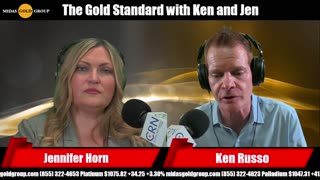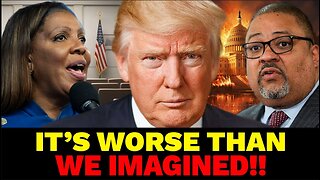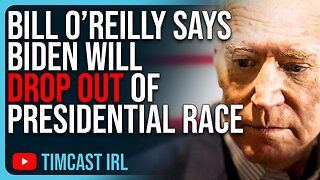How to Protect Your Wealth | The Gold Standard 2337
https://www.midasgoldgroup.com/
In this provocative episode of The Gold Standard, hostess Jennifer Horn teams up with Ken Russo, SVP of the Midas Gold Group, to dissect a pressing issue: “We’re at the Tipping Point: How to Protect Your Wealth.” As the economic landscape evolves, preparing yourself for the unexpected is essential. You must equip yourself with the knowledge and strategies to navigate these changes effectively. Gain invaluable insights into preserving wealth in today’s dynamic financial climate.
A monumental shift occurred in 1913 with the establishment of the Federal Reserve, a keystone moment in American financial history. Driven by the recognition of the need for a centralized and flexible financial system to stabilize the economy, the Federal Reserve Act, championed by President Woodrow Wilson, introduced regional reserve banks. Influential figures like Senator Nelson Aldrich and leading economists were instrumental in crafting this transformative legislation. This move laid the foundation for modernizing the American monetary system and shaping the nation’s economic trajectory, such as it is.
G. Edward Griffin’s book, “The Creature from Jekyll Island,” explores the Fed’s creation and suggests that the Federal Reserve was established to serve the interests of powerful banking elites.
1933, President Franklin D. Roosevelt issued Executive Order 6102, an audacious move that reshaped the American financial landscape. This historic decree made private ownership of gold illegal, demanding citizens exchange their gold holdings for US dollars at the prevailing rate, risk imprisonment, a $10,000 fine ($226,000 in today’s money), or both. It responded to deflationary pressures during the Great Depression, though controversial for its infringement on personal liberties. This order left an indelible mark on the nation’s monetary policies and practices.
The Bretton Woods Conference of 1944 marked a turning point in international finance. Delegates from 44 Allied nations convened to design a new global monetary order to prevent competitive devaluations and protectionist policies. The conference birthed institutions like the IMF and IBRD, establishing the US dollar as the world’s primary reserve currency. The Bretton Woods Agreement ushered in an era of unprecedented economic stability and growth. Bretton Woods was short-lived, however, because its members wouldn’t follow its rules.
President Richard Nixon’s 1971 decision to sever the US currency from the gold standard was driven by economic and geopolitical factors. Escalating inflation, exacerbated by the costs of the Vietnam War, led to concerns over insufficient gold reserves. The move granted the US government more flexibility in managing monetary policy. It marked a significant departure from traditional practices, paving the way for the fiat currency system in place today.
The US forged a landmark agreement with Saudi Arabia in 1974, establishing the “petrodollar” system. This historic deal, offering military aid in exchange for exclusive oil transactions in US dollars, transformed the US dollar into the de facto global reserve currency for oil trade. The petrodollar system solidified the dollar’s position as the world’s primary reserve currency.
While meticulously crafted milestones have solidified the US dollar’s status as the world’s reserve currency, recent challenges loom. As Ken points out, our country is “slipping” back on all the advancements made during the last century. The mounting national debt, unconventional monetary policies, and calls for alternative global currencies cast a shadow over its unassailable status. Emergent digital currencies and shifts in global trade dynamics signal a potential inflection point, compelling a reevaluation of long-standing assumptions.
The Morgan Silver Dollar was minted from 1878 to 1904 and once again in 1921. Morgan dollars are crafted from 90% silver, embodying a time when sound money underpinned economic stability. Its elegant design symbolizes national pride and resilience, reminding us of an era where financial integrity shaped a prosperous future. In today’s uncertain times, gold and silver are beacons of stability, transcending fiat currencies. They represent the essence of genuine money, offering a timeless sanctuary for preserving wealth. They are not just assets but a testament to the enduring wisdom of investing in what has stood the test of time.
____________________________________________________________________________________________________
Listen to The Gold Standard: https://www.midasgoldgroup.com/gold-standard-radio-show/
Gold IRA: https://www.midasgoldgroup.com/gold-ira/
Invest in Gold: https://www.midasgoldgroup.com/buy-gold/
Guide to Owning Bullion & Coins: https://www.midasgoldgroup.com/bullion-guide/
Read the latest precious metals news: https://www.midasgoldgroup.com/news/
-
 25:06
25:06
Midas Gold Group
1 month agoThe Meaning of the Higher Gold Price | The Gold Standard 2421
57 -
 LIVE
LIVE
Vigilant News Network
2 hours agoMedia Blackout: 10 News Stories They Chose Not to Tell You - Episode 30
1,457 watching -
 36:08
36:08
Stephen Gardner
2 hours ago🔴Trump Lawyer EXPOSES Judges Juan Merchan & Arthur Engoron in NYC cases
12.7K61 -
 4:30
4:30
Caleb Hammer
1 month ago27 Year Old Doesn't Give A Single Crap About His Finances
20.3K33 -
 52:38
52:38
Squaring The Circle w/ Randall Carlson
7 hours ago#011 The Cosmos Speaks: The Tunguska Impact Event Pt.2 - Squaring The Circle
12.9K11 -
 27:47
27:47
Degenerate Jay
8 hours agoWatch Dogs Is An Underrated Gem - Watch Dogs Game Review
13.2K4 -
 51:00
51:00
Sports Wars
7 hours agoBronny James Has DISASTROUS Debut, Caitlin Clark HATE Reaches New Level, Vikings Rookie DB Tragedy
43.9K41 -
 41:05
41:05
Standpoint with Gabe Groisman
9 hours agoEp. 35. Saluting our Troops this Independence Day Weekend. Vice Adm. Herman Shelanski, USN (ret.)
55.2K16 -
 45:54
45:54
The Why Files
16 hours agoHumans vs Superhumans | When Monsters Were Real and We Almost Went Extinct
58.7K71 -
 23:03
23:03
TimcastIRL
9 hours agoBill O’Reilly Says Biden Will DROP OUT, Tucker Carlson Says Obama Wants Biden GONE
82.9K256